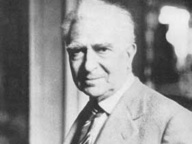Padiglione Italia 18. Mostra Internazionale di Architettura La Biennale di Venezia - Spaziale. Ognuno appartiene a tutti gli altri

Post Disaster Rooftops EP04, Taranto I Ph. Sara Scanderebech
Dal 20 May 2023 al 26 November 2023
Venezia
Luogo: Arsenale
Indirizzo: Tese delle Vergini
Curatori: Fosbury Architecture
Enti promotori:
- Direzione Generale Creatività Contemporanea del Ministero della cultura
Sito ufficiale: http://www.creativitacontemporanea.cultura.gov.it
“Spaziale. Ognuno appartiene a tutti gli altri” è il titolo del Padiglione Italia alla 18. Mostra Internazionale di Architettura – La Biennale di Venezia, promosso dalla Direzione Generale Creatività Contemporanea del Ministero della cultura e curato da Fosbury Architecture (Giacomo Ardesio, Alessandro Bonizzoni, Nicola Campri, Veronica Caprino e Claudia Mainardi).
Per la prima volta un gruppo curatoriale costituito da architetti nati tra il 1987 e il 1989 porta a Venezia le istanze di una nuova generazione di progettisti under 40 (nove gruppi di progettisti e altrettanti advisor, professionisti provenienti da diversi campi delle industrie creative, per un totale di circa 50 persone con età media di 33 anni) cresciuta e formatasi in uno scenario di crisi permanente e che per questo ha fatto della collaborazione, della condivisione e del dialogo la base di ogni propria attività. Una generazione consapevole, da un lato, dell’impatto e della responsabilità del settore delle costruzioni nella crisi ambientalee, dall’altro, della crisi di rilevanza dell’architettura e del progetto nella trasformazione di città e territori. Una generazione di progettisti che, rispetto alle precedenti, è cresciuta in un regime di scarsità di risorse e di opportunità, che vive come cruciale il tema della sostenibilità, e che sa che questo è l’unico contesto nel quale potrà operare ora e in futuro.
Fosbury Architecture si fa portavoce di quei progettisti italiani “nativi sostenibili” che hanno già accettato tutte queste sfide, per i quali la transdisciplinarietà è uno strumento per espandere i limiti dell’architettura e il manufatto costruito è un mezzo e non un fine ultimo. “Spaziale. Ognuno appartiene a tutti gli altri” nasce da questi presupposti e si fonda sulla visione dell’Architettura come pratica di ricerca multidisciplinare al di là dei manufatti e della Progettazione come risultato di un lavoro collettivo e collaborativo, che supera l’idea dell’architetto-autore. In questa visione, lo spazio è inteso come luogo fisico e simbolico, area geografica e dimensione astratta, sistema di riferimenti conosciuti e territorio di possibilità.
Spaziale fa dunque riferimento a una nozione espansa del campo dell’architettura: intervenire nello spazio significa operare su quel tessuto di relazioni tra persone e luoghi che è alla base di ogni progetto.
“Spaziale. Ognuno appartiene a tutti gli altri” porta al centro del Padiglione Italia un processo collaborativo ad ampio spettro, un progetto inclusivo che coinvolge figure di eccellenza e comunità locali, mettendo in scena le migliori ricerche portate avanti da architetti italiani under 40 in relazione a specifiche necessità territoriali.
Per la prima volta, infatti, il Padiglione Italia è stato interpretato dai curatori come l’occasione per realizzare nuovi progetti: un attivatore di azioni concrete a beneficio di territori e comunità locali, oltre l’idea che una mostra debba essere solo “esibizione”. Per questa ragione una parte consistente dei fondi pubblici destinati al Padiglione è stata utilizzata per innescare nuovi processi o potenziare progetti esistenti aggiungendovi un nuovo capitolo.
Fosbury Architecture ha individuato e invitato a collaborare nove pratiche spaziali, progettisti chiamati a sviluppare nove progetti pionieri per il Padiglione Italia: nove pratiche di architettura – architetti o gruppi italiani under 40 rappresentativi di ricerche originali, attivi in Italia e all’estero – selezionati in base all’attitudine con cui operano, i territori in cui intervengono, i mezzi che utilizzano, le questioni che sollevano e le risposte che suggeriscono, e che rappresentano un elenco, seppure incompleto, di professionisti italiani che lavorano lungo il perimetro di ciò che è considerato oggi architettura.
Per rendere i nove progetti dei prodotti transdisciplinari genuini, i curatori hanno affiancato a ciascun progettista un advisor, proveniente da altri campi della creatività: artisti visivi e performer, esperti di alimentazione e di intelligenza artificiale, scrittori e registi.
Sono state poi individuate nove stazioni, siti rappresentativi di condizioni di fragilità o trasformazione del nostro Paese, dove ciascun gruppo transdisciplinare è stato chiamato a intervenire. Infine, ciascun gruppo di progettazione ha collaborato e collaborerà con una serie di incubatori – attori locali come musei, associazioni, festival culturali – con l’obiettivo di radicare ciascun progetto nel territorio di riferimento.
In questo modo i nove progetti legati al Padiglione Italia andranno a configurare le tappe di un’inedita geografia, diventando mete simboliche di un rinnovato Viaggio in Italia.
Il lavoro di ciascun gruppo risponde a una serie di temi urgenti per il contesto italiano e la disciplina in generale: sfide ‘impossibili’ se arontate a livello globale ma che arontate nei contesti locali sono in grado di produrre riscontri immediati e tangibili.
A Taranto la convivenza con il disastro verrà raccontata sui tetti della città dal collettivo Post Disaster in dialogo con Silvia Calderoni e Ilenia Caleo.
Nella Baia di Ieranto, oasi naturalistica del FAI nei pressi di Napoli, gli architetti BB – Alessandro Bava e Fabrizio Ballabio – con Terraforma Festival metteranno in scena la riconciliazione con l’ambiente.
A Trieste la coesistenza multiculturale verrà analizzata lungo il confine italo-sloveno da Giuditta Vendramecon Ana Shametaj.
A Ripa Teatina, in provincia di Chieti, gli HPO con Claudia Durastanti coinvolgeranno la comunità nel recupero del patrimonio incompiuto.
Nella terraferma veneziana, tra Mestre e Marghera, i Parasite 2.0 con Elia Fornari affronteranno il tema dell’inclusione sociale lavorando sulla democratizzazione delle attività ricreative.
A Cabras, nel Montiferru in Sardegna, il gruppo Lemonot lavorerà con Roberto Flore sulla transizione alimentare.
A Librino, quartiere di Catania, Studio Ossidiana collaborerà con Adelita Husni Bey a un progetto di rigenerazione delle periferie.
A Belmonte Calabro, a rappresentare le aree interne italiane, il collettivo Orizzontale con Bruno Zamborlinsi interrogherà sul superamento del divario digitale.
Infine, nella piana fra Prato e Pistoia, i progettisti (ab)Normal e CAPTCHA in collaborazione con Emilio Vavarella investigheranno i limiti della tutela del paesaggio e della sua riproducibilità.
All’interno del Padiglione Italia non verrà dunque presentato un progetto finito, ma l’avvio di una serie di iniziative che avrà un impatto di lunga durata.
Dal punto di vista espositivo, il Padiglione restituirà la sintesi formale e teorica dei processi innescati nei nove territori nei mesi precedenti all’apertura, da gennaio a maggio, restituendo una diversa e originale immagine dell’architettura italiana nel contesto internazionale.
All’espansione del progetto del Padiglione al di fuori dell’Arsenale corrisponderà una riduzione dell’allestimento per lasciare spazio alla rappresentazione dei processi attivati in tutta la penisola italiana. I progetti locali non si interromperanno con l’inaugurazione del Padiglione Italia, ma proseguiranno con una fitta serie di attività sui territori lungo la durata della mostra e oltre.
Lo svolgimento di tutte le attività sui territori potrà essere seguito sulle piattaforme online e social attivate a partire da gennaio 2023.
Invece di rimanere ancorati a una dinamica espositiva autoreferenziale, i curatori hanno preferito cogliere l’occasione del Padiglione Italia per mettere in pratica un’accademia diffusa sul territorio nazionale e per finanziare – attraverso i fondi stanziati e raccolti – progetti utili per le comunità che hanno partecipato all’intero processo: per primi i Fosbury Architecture non hanno agito da curatori-autori ma da mediatori tra diverse costellazioni di agenti, locali e non, attori di un progetto collettivo che ha già dato vita a un vero e proprio Laboratorio del Futuro.
“Spaziale. Ognuno appartiene a tutti gli altri” diventa concretamente promotore di processi che andranno oltre la durata semestrale della Biennale Architettura 2023, rendendo tangibile l’eredità della mostra e del Padiglione Italia, dando significato al consumo di risorse utilizzate per realizzarli.
La Direzione Generale Creatività Contemporanea del Ministero della cultura ha contribuito alla realizzazione di “Spaziale. Ognuno appartiene a tutti gli altri” con un importo pari a 800.000 euro formalizzato, come di consueto, con una convenzione con la Fondazione La Biennale di Venezia, stipulata il 26 ottobre 2022.
Il Padiglione Italia è stato realizzato anche grazie al sostegno di Banca Ifis in qualità di main sponsor, di Bottega Veneta in qualità di sponsor e di Rilegno in qualità di sostenitore, il cui contributo ammonta complessivamente a più di 230.000 euro.
Si ringraziano il main sponsor tecnico Fohhn, gli sponsor tecnici Epson, Flos, NM3 e Fedrigoni, il cui contributo ammonta a un valore complessivo di oltre 150.000 euro.
Un ringraziamento speciale ad Amorim.
Le attivazioni nelle varie stazioni locali sono state rese possibili, oltre che dalla ripartizione delle risorse del Padiglione Italia, soprattutto grazie al coinvolgimento di numerosi partner e sponsor, a cui va un sentito ringraziamento per aver abbracciato il progetto.
Il Padiglione Italia, per tutta la durata della mostra, sarà accompagnato da un Public Program intitolato “Mondo Novo”2, che sarà articolato in numerosi appuntamenti – seminari, conferenze, laboratori, workshop – su diverse sedi.
All’interno di questo programma, una serie di cinque incontri si svolgerà al Teatrino di Palazzo Grassi, a Venezia, grazie al supporto di Bottega Veneta.
“Spaziale. Ognuno appartiene a tutti gli altri” sarà raccontato nella sua ampiezza da un catalogo a cura di Fosbury Architecture, edito da Humboldt Books, che raccoglierà dialoghi tra i progettisti e gli advisor: Post Disaster (Peppe Frisino, Gabriele Leo, Grazia Mappa, Gabriella Mastrangelo) con Silvia Calderoni, Ilenia Caleo; BB (Fabrizio Ballabio, Alessandro Bava) con Terraforma (Ruggero Pietromarchi); Giuditta Vendrame con Ana Shametaj; HPO (Alessandro Argentesi, Luca Cei, Mara Femia, Filippo Ferraro, Gregorio Giannini, Gabriele Giau, Giulio Marchetti, Oreste Montinaro, Dario Rizzi, Giorgio Scanelli, Riccardo Simioni) con Claudia Durastanti; Parasite 2.0 (Stefano Colombo, Eugenio Cosentino, Luca Marullo) con Elia Fornari – Brain Dead; Lemonot (Sabrina Morreale, Lorenzo Perri) con Roberto Flore; Studio Ossidiana (Giovanni Belotti, Alessandra Covini) con Adelita Husni Bey; Orizzontale (Jacopo Ammendola, Juan López Cano, Giuseppe Grant, Margherita Manfra, Nasrin Mohiti Asli, Roberto Pantaleoni, Stefano Ragazzo) con Bruno Zamborlin; (ab)Normal (Marcello Carpino, Mattia Inselvini, Davide Masserini, Luigi Savio), Captcha Architecture (Margherita Marri, Jacopo Rosa) con Emilio Vavarella; approfondimenti a cura di Mirko Zardini, dpr-barcelona (Ethel Baraona Pohl, César Reyes Nájera) con Anna Puigjaner Barbera e Markus Miessen, Charlotte Malterre-Barthes e Nina Bassoli; infografiche di Fosbury Architecture; saggi fotografici di Sara Scanderebech, Luca Campri, Eleonora Agostini, Barbara Rossi, Giacomo Bianco, Giovanni Galanello, Alessandro Iovino, Adrianna Glaviano, Mattia Balsamini.
Per la prima volta un gruppo curatoriale costituito da architetti nati tra il 1987 e il 1989 porta a Venezia le istanze di una nuova generazione di progettisti under 40 (nove gruppi di progettisti e altrettanti advisor, professionisti provenienti da diversi campi delle industrie creative, per un totale di circa 50 persone con età media di 33 anni) cresciuta e formatasi in uno scenario di crisi permanente e che per questo ha fatto della collaborazione, della condivisione e del dialogo la base di ogni propria attività. Una generazione consapevole, da un lato, dell’impatto e della responsabilità del settore delle costruzioni nella crisi ambientalee, dall’altro, della crisi di rilevanza dell’architettura e del progetto nella trasformazione di città e territori. Una generazione di progettisti che, rispetto alle precedenti, è cresciuta in un regime di scarsità di risorse e di opportunità, che vive come cruciale il tema della sostenibilità, e che sa che questo è l’unico contesto nel quale potrà operare ora e in futuro.
Fosbury Architecture si fa portavoce di quei progettisti italiani “nativi sostenibili” che hanno già accettato tutte queste sfide, per i quali la transdisciplinarietà è uno strumento per espandere i limiti dell’architettura e il manufatto costruito è un mezzo e non un fine ultimo. “Spaziale. Ognuno appartiene a tutti gli altri” nasce da questi presupposti e si fonda sulla visione dell’Architettura come pratica di ricerca multidisciplinare al di là dei manufatti e della Progettazione come risultato di un lavoro collettivo e collaborativo, che supera l’idea dell’architetto-autore. In questa visione, lo spazio è inteso come luogo fisico e simbolico, area geografica e dimensione astratta, sistema di riferimenti conosciuti e territorio di possibilità.
Spaziale fa dunque riferimento a una nozione espansa del campo dell’architettura: intervenire nello spazio significa operare su quel tessuto di relazioni tra persone e luoghi che è alla base di ogni progetto.
“Spaziale. Ognuno appartiene a tutti gli altri” porta al centro del Padiglione Italia un processo collaborativo ad ampio spettro, un progetto inclusivo che coinvolge figure di eccellenza e comunità locali, mettendo in scena le migliori ricerche portate avanti da architetti italiani under 40 in relazione a specifiche necessità territoriali.
Per la prima volta, infatti, il Padiglione Italia è stato interpretato dai curatori come l’occasione per realizzare nuovi progetti: un attivatore di azioni concrete a beneficio di territori e comunità locali, oltre l’idea che una mostra debba essere solo “esibizione”. Per questa ragione una parte consistente dei fondi pubblici destinati al Padiglione è stata utilizzata per innescare nuovi processi o potenziare progetti esistenti aggiungendovi un nuovo capitolo.
Fosbury Architecture ha individuato e invitato a collaborare nove pratiche spaziali, progettisti chiamati a sviluppare nove progetti pionieri per il Padiglione Italia: nove pratiche di architettura – architetti o gruppi italiani under 40 rappresentativi di ricerche originali, attivi in Italia e all’estero – selezionati in base all’attitudine con cui operano, i territori in cui intervengono, i mezzi che utilizzano, le questioni che sollevano e le risposte che suggeriscono, e che rappresentano un elenco, seppure incompleto, di professionisti italiani che lavorano lungo il perimetro di ciò che è considerato oggi architettura.
Per rendere i nove progetti dei prodotti transdisciplinari genuini, i curatori hanno affiancato a ciascun progettista un advisor, proveniente da altri campi della creatività: artisti visivi e performer, esperti di alimentazione e di intelligenza artificiale, scrittori e registi.
Sono state poi individuate nove stazioni, siti rappresentativi di condizioni di fragilità o trasformazione del nostro Paese, dove ciascun gruppo transdisciplinare è stato chiamato a intervenire. Infine, ciascun gruppo di progettazione ha collaborato e collaborerà con una serie di incubatori – attori locali come musei, associazioni, festival culturali – con l’obiettivo di radicare ciascun progetto nel territorio di riferimento.
In questo modo i nove progetti legati al Padiglione Italia andranno a configurare le tappe di un’inedita geografia, diventando mete simboliche di un rinnovato Viaggio in Italia.
Il lavoro di ciascun gruppo risponde a una serie di temi urgenti per il contesto italiano e la disciplina in generale: sfide ‘impossibili’ se arontate a livello globale ma che arontate nei contesti locali sono in grado di produrre riscontri immediati e tangibili.
A Taranto la convivenza con il disastro verrà raccontata sui tetti della città dal collettivo Post Disaster in dialogo con Silvia Calderoni e Ilenia Caleo.
Nella Baia di Ieranto, oasi naturalistica del FAI nei pressi di Napoli, gli architetti BB – Alessandro Bava e Fabrizio Ballabio – con Terraforma Festival metteranno in scena la riconciliazione con l’ambiente.
A Trieste la coesistenza multiculturale verrà analizzata lungo il confine italo-sloveno da Giuditta Vendramecon Ana Shametaj.
A Ripa Teatina, in provincia di Chieti, gli HPO con Claudia Durastanti coinvolgeranno la comunità nel recupero del patrimonio incompiuto.
Nella terraferma veneziana, tra Mestre e Marghera, i Parasite 2.0 con Elia Fornari affronteranno il tema dell’inclusione sociale lavorando sulla democratizzazione delle attività ricreative.
A Cabras, nel Montiferru in Sardegna, il gruppo Lemonot lavorerà con Roberto Flore sulla transizione alimentare.
A Librino, quartiere di Catania, Studio Ossidiana collaborerà con Adelita Husni Bey a un progetto di rigenerazione delle periferie.
A Belmonte Calabro, a rappresentare le aree interne italiane, il collettivo Orizzontale con Bruno Zamborlinsi interrogherà sul superamento del divario digitale.
Infine, nella piana fra Prato e Pistoia, i progettisti (ab)Normal e CAPTCHA in collaborazione con Emilio Vavarella investigheranno i limiti della tutela del paesaggio e della sua riproducibilità.
All’interno del Padiglione Italia non verrà dunque presentato un progetto finito, ma l’avvio di una serie di iniziative che avrà un impatto di lunga durata.
Dal punto di vista espositivo, il Padiglione restituirà la sintesi formale e teorica dei processi innescati nei nove territori nei mesi precedenti all’apertura, da gennaio a maggio, restituendo una diversa e originale immagine dell’architettura italiana nel contesto internazionale.
All’espansione del progetto del Padiglione al di fuori dell’Arsenale corrisponderà una riduzione dell’allestimento per lasciare spazio alla rappresentazione dei processi attivati in tutta la penisola italiana. I progetti locali non si interromperanno con l’inaugurazione del Padiglione Italia, ma proseguiranno con una fitta serie di attività sui territori lungo la durata della mostra e oltre.
Lo svolgimento di tutte le attività sui territori potrà essere seguito sulle piattaforme online e social attivate a partire da gennaio 2023.
Invece di rimanere ancorati a una dinamica espositiva autoreferenziale, i curatori hanno preferito cogliere l’occasione del Padiglione Italia per mettere in pratica un’accademia diffusa sul territorio nazionale e per finanziare – attraverso i fondi stanziati e raccolti – progetti utili per le comunità che hanno partecipato all’intero processo: per primi i Fosbury Architecture non hanno agito da curatori-autori ma da mediatori tra diverse costellazioni di agenti, locali e non, attori di un progetto collettivo che ha già dato vita a un vero e proprio Laboratorio del Futuro.
“Spaziale. Ognuno appartiene a tutti gli altri” diventa concretamente promotore di processi che andranno oltre la durata semestrale della Biennale Architettura 2023, rendendo tangibile l’eredità della mostra e del Padiglione Italia, dando significato al consumo di risorse utilizzate per realizzarli.
La Direzione Generale Creatività Contemporanea del Ministero della cultura ha contribuito alla realizzazione di “Spaziale. Ognuno appartiene a tutti gli altri” con un importo pari a 800.000 euro formalizzato, come di consueto, con una convenzione con la Fondazione La Biennale di Venezia, stipulata il 26 ottobre 2022.
Il Padiglione Italia è stato realizzato anche grazie al sostegno di Banca Ifis in qualità di main sponsor, di Bottega Veneta in qualità di sponsor e di Rilegno in qualità di sostenitore, il cui contributo ammonta complessivamente a più di 230.000 euro.
Si ringraziano il main sponsor tecnico Fohhn, gli sponsor tecnici Epson, Flos, NM3 e Fedrigoni, il cui contributo ammonta a un valore complessivo di oltre 150.000 euro.
Un ringraziamento speciale ad Amorim.
Le attivazioni nelle varie stazioni locali sono state rese possibili, oltre che dalla ripartizione delle risorse del Padiglione Italia, soprattutto grazie al coinvolgimento di numerosi partner e sponsor, a cui va un sentito ringraziamento per aver abbracciato il progetto.
Il Padiglione Italia, per tutta la durata della mostra, sarà accompagnato da un Public Program intitolato “Mondo Novo”2, che sarà articolato in numerosi appuntamenti – seminari, conferenze, laboratori, workshop – su diverse sedi.
All’interno di questo programma, una serie di cinque incontri si svolgerà al Teatrino di Palazzo Grassi, a Venezia, grazie al supporto di Bottega Veneta.
“Spaziale. Ognuno appartiene a tutti gli altri” sarà raccontato nella sua ampiezza da un catalogo a cura di Fosbury Architecture, edito da Humboldt Books, che raccoglierà dialoghi tra i progettisti e gli advisor: Post Disaster (Peppe Frisino, Gabriele Leo, Grazia Mappa, Gabriella Mastrangelo) con Silvia Calderoni, Ilenia Caleo; BB (Fabrizio Ballabio, Alessandro Bava) con Terraforma (Ruggero Pietromarchi); Giuditta Vendrame con Ana Shametaj; HPO (Alessandro Argentesi, Luca Cei, Mara Femia, Filippo Ferraro, Gregorio Giannini, Gabriele Giau, Giulio Marchetti, Oreste Montinaro, Dario Rizzi, Giorgio Scanelli, Riccardo Simioni) con Claudia Durastanti; Parasite 2.0 (Stefano Colombo, Eugenio Cosentino, Luca Marullo) con Elia Fornari – Brain Dead; Lemonot (Sabrina Morreale, Lorenzo Perri) con Roberto Flore; Studio Ossidiana (Giovanni Belotti, Alessandra Covini) con Adelita Husni Bey; Orizzontale (Jacopo Ammendola, Juan López Cano, Giuseppe Grant, Margherita Manfra, Nasrin Mohiti Asli, Roberto Pantaleoni, Stefano Ragazzo) con Bruno Zamborlin; (ab)Normal (Marcello Carpino, Mattia Inselvini, Davide Masserini, Luigi Savio), Captcha Architecture (Margherita Marri, Jacopo Rosa) con Emilio Vavarella; approfondimenti a cura di Mirko Zardini, dpr-barcelona (Ethel Baraona Pohl, César Reyes Nájera) con Anna Puigjaner Barbera e Markus Miessen, Charlotte Malterre-Barthes e Nina Bassoli; infografiche di Fosbury Architecture; saggi fotografici di Sara Scanderebech, Luca Campri, Eleonora Agostini, Barbara Rossi, Giacomo Bianco, Giovanni Galanello, Alessandro Iovino, Adrianna Glaviano, Mattia Balsamini.
SCARICA IL COMUNICATO IN PDF
COMMENTI

-
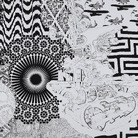 Dal 19 January 2026 al 1 March 2026
Roma | GNAMC | Galleria Nazionale d’Arte Moderna e Contemporanea
Dal 19 January 2026 al 1 March 2026
Roma | GNAMC | Galleria Nazionale d’Arte Moderna e Contemporanea
Maurizio Cannavacciuolo. Promenade
-
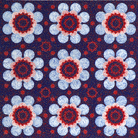 Dal 17 January 2026 al 22 March 2026
Bologna | Museo Civico Medievale
Dal 17 January 2026 al 22 March 2026
Bologna | Museo Civico Medievale
Alessandro Moreschini. L’ornamento non è più un delitto
-
 Dal 15 January 2026 al 15 April 2026
Milano | Palazzo Citterio | Ledwall
Dal 15 January 2026 al 15 April 2026
Milano | Palazzo Citterio | Ledwall
Debora Hirsch. Vanishing Trees
-
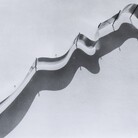 Dal 15 January 2026 al 28 February 2026
Milano | The Pool NYC | Palazzo Fagnani Ronzoni
Dal 15 January 2026 al 28 February 2026
Milano | The Pool NYC | Palazzo Fagnani Ronzoni
I tempi dello sguardo. 90 anni di fotografia italiana in due atti - Il Bianco e il Nero
-
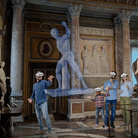 Dal 9 January 2026 al 27 February 2026
Roma | Galleria Borghese
Dal 9 January 2026 al 27 February 2026
Roma | Galleria Borghese
Sguardi oltre il tempo
-
 Dal 20 December 2025 al 20 April 2026
Caserta | Reggia di Caserta
Dal 20 December 2025 al 20 April 2026
Caserta | Reggia di Caserta
Regine: trame di cultura e diplomazia tra Napoli e l’Europa
